5 Benefits of Salesforce Lightning for Your Business

Salesforce Lightning is considered the next generation of the CRM platform and user experience. Salesforce Lightning is a framework based on the elements in order to develop applications on the Salesforce CRM. Salesforce has equipped a broad audience, the Lightning framework can be considered as a tool to design the application without proper development knowledge. The prior version, Salesforce Classic, was invented to fulfill the same requirements. However, Salesforce released this new version of Salesforce Lightning to resolved the issues faced in the earlier version and provide a seamless experience to the users. In this blog, CloudVandana is focusing on the key benefits of Salesforce Lightning. 1. Automation With the latest features of Salesforce lightning, the sales team can automate the sales process which leads to an increased conversion rate. Converting leads into sales is a long process, the sales team needs to follow up with the prospects, create different quotes for different clients, and many more. So they become unable to concentrate fully on sales. The feature’Sales Path’ will automatically design the sales pipeline. This will help the user to access quickly and efficiently convincing the leads and winning their trust. 2. App Development Designing and developing applications was never been so easy. As the platform is component-based, users can simply integrate the components already built by the Salesforce partners and use them in the application. The process helps in building high-quality applications without investing extra time. 3. Third-Party Integration Salesforce lightning is composed of various components and is available on the Salesforce AppExchange platform, so it is capable to fulfill all the requirements. But Salesforce understands the requirements are ever-changing. So the platform allows the user to integrate third-party components effortlessly. As a result, users never face any difficulties for the business needs. 4. Einstein AI Integration Artificial intelligence Einstein has come up with all-new features in Salesforce Lightning. Einstein Opportunity Insights and Einstein Forecasting are the new upgraded features in the Lightning version. In addition, Einstein Accounts Insights is another on the list. Through these features, the users can track the customer’s behavioral journey and can personalize the offerings accordingly. 5. Privacy Privacy is a very important concern for cloud-based CRM solutions. Salesforce understands this concern. So with new updates in lightning, CRM has focused on privacy a lot. The new features reduce the possibilities of malicious activities while providing a clean interface for the users. The ‘Locker Service’ is one of the best Salesforce Lightning Business Benefits. So we can say that Salesforce Lightning is the latest invention for Salesforce org’s interface. The sleek, intuitive, and customized design will help the users to work with greater efficiency. Want to know more about Salesforce Lightning benefits? Please feel free to take a consultation call from the Salesforce Experts of CloudVandana or post your queries in the comment section. Request a Free Consultation YOU MIGHT ALSO LIKE
How to Ensure Salesforce Data Security for Your Business
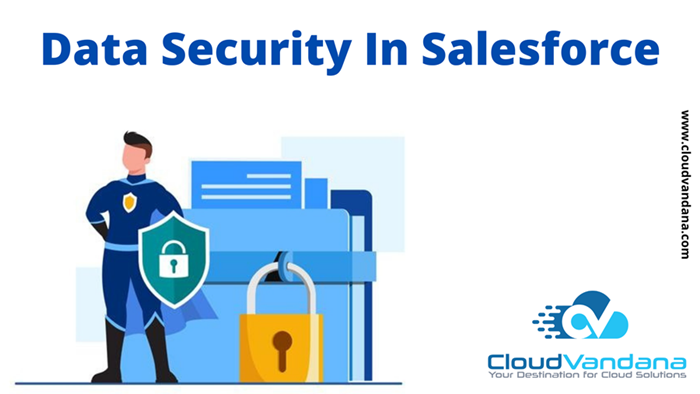
Worried about Salesforce Data Security? Follow these best practices to ensure your business’s information is protected. Salesforce is recognized as the world’s leading CRM (Client Relationship Management) provider. Salesforce is a cloud-based CRM that is used by organizations across the world. But when the security team hears the word ‘ cloud,’ they seem to tense up, as things may go wrong if important data gets hacked. This is a valid concern as data security is an essential part of every business. But Salesforce provides a strong Security model to certify the security of each and every data of every organization. Salesforce Data Security Model can be divided into four levels. CloudVandana gives a detailed description of each level. 1. Organizational Level Security The security of the organizational level decides when and from where the users can access the files. 1. IP Restrictions- IP restrictions can be set for every user. Using trusted IP ranges, admins can restrict the access of the users. If the users attempt to log in outside of the range, they will be asked to complete two-factor authentication. 2. Login Access- Admins can set the limit of hours when users can log in, depending on their profile. 3. Password Policies- Users can specify the amount of time before all users’ passwords expire and the level of complexity required for passwords. Admins can set the settings of password to expire for all the users in the organization except for users with ‘password never expires’ permission after specified days. 2. Object Level Security 1. Profile- Object-level security is controlled by a profile allocated to a particular user. Profile dominates objects that a user can see and work on these objects; this setup is called CRED (Create, Read, Edit, Delete) 2. Permission- Permission sets settings are used when additional permission is needed to provide the users who are already assigned a profile. 3. Field Level Security Field level security only restricts access; this level of security cannot grant permission. For example, if the support profile has read and edit permissions on the contact object and read-only field-level permissions on a field in the contact object, then users are assigned to support the profile that will only have read access to that particular field. 4. Record Level Security There are four different factors that control the security of the record level. Organization-Wide Sharing Defaults: The administrators will have full access to a record. Admins use organization-wide defaults to lock down data and then use the other record-level security and sharing tools to open up the data users who actually need the data. To regulate OWD (Organization-Wide Default) for the task, admins need to ask a few questions about each object. Users can access the data directly from the ‘hierarchy’. In this feature, users can view, edit or report data owned by or shared with them. If the ‘Grant Access Using Hierarchy’ option is not enabled, then only the record owner and users with granted permissions are allowed to access the data record. ‘Role Hierarchy’ gives vertical access to records. Sharing Rules Admins can use the sharing rules to expand sharing permission to users in public groups or roles. Sharing rules gives horizontal access to records across your organization. Manual Sharing Manual sharing is used to handle exception cases where access to a specific record needs to be given to a specific user. Sharing button is provided on the records page for manual sharing. This is the overview of Salesforce data security. To know more about the details of Salesforce data security, or any Salesforce-related queries, feel free to take a consultation call with CloudVandana. Request a Free Consultation YOU MIGHT ALSO LIKE
Understanding the Key Components of Salesforce Architecture

The Salesforce Architecture platform is the establishment of the administration controlled by metadata and constructed with various parts, similar to information administrations, computerized reasoning, and powerful APIs for improvement. Salesforce is recognized as the #1 CRM in the world. Salesforce manages to operate many things in less time. The main secret lies in architecture. Salesforce does all the wonders with the help of architecture. Salesforce is a cloud-based CRM, so the offerings of Salesforce live in the trusted, multitenant cloud system. Salesforce’s prebuilt contributions, like Sales Cloud and Marketing Cloud, have a steady and powerful impact on this. Every function is integrated into the Salesforce system. Platform advancements of Salesforce, like Einstein and Lightning system, incorporate the task that the user produces. Terminology Of Salesforce Architecture CloudVandana is discussing the key terminologies before going to the core technical parts of Salesforce architecture. App- The main part of data storage is called App, then comes the main heads under which it is placed. Various information heads are called ‘Objects,’ and further detailed objects are called ‘Fields’. Single rows are called ‘Records’. Rows are the information stored in fields. Instance –Instance is an entire arrangement of structure, system, and infrastructure capabilities, both shared and nonshared. Superpod- Superpod is an arrangement of frameworks, systems, and capabilities of foundations, including outbound intermediary servers, stack balancers, mail servers, SAN texture, and other frameworks supporting different instances. Org- Organization is a single client of the Salesforce application. Each trial produces another org. An org is very adaptable and has unmistakable security settings, record permeability, sharing settings, UI look and feels, work processes, triggers, custom articles, and even custom REST APIs. Sandbox- Sandbox is an instance of Salesforce that hosts full copies of creation organizations for client application advancement purposes. These are test conditions for clients to do client acknowledgment testing against their applications previously conveying changes into their production org. The Core Architecture of Salesforce The architecture of Salesforce can be divided into 3 layers for better understanding. The details are described below- 1. Multi-Tenant Multi-tenancy is a great influencer. Each customer is called a tenant. Tenants are allowed to customize some parts of the application, but they are not allowed to customize the application’s code. In this architecture, multiple instances of the application operate in a shared environment. This architecture is capable of working because each tenant is integrated physically, but separated logically. In this way, a software application in a multi-tenant architecture can share a dedicated instance of configurations, data, user management, and other functionalities. 2. Metadata In this form of architecture, multitenancy is viable only in cases when it can support applications that are dependable, adaptable, upgradeable, secure, and quick. A multitenant application is dynamic in nature, to satisfy the desires of the individual inhabitants and their customers. A multitenant architecture plans to develop a runtime motor that produces application parts from metadata -information about the application itself. There is an unmistakable division between the metadata that portrays the base usefulness of an application and the metadata that connects to each inhabitant’s information and customizations. 3. API APIs connect diverse bits of programming to interface with each other and trade data. APIs are comparable. Without knowing the precise elements, users can interface the applications with different applications or programming structures. The basic innovation deals with the information of how data transfers all through the application. Conclusion Salesforce architecture has been carefully planned and placed exactly where it requires it to be. If you have any queries regarding the functionalities of Salesforce architecture or any other Salesforce needs, feel free to take a consultation with CloudVandana, a registered Salesforce Partner. Request a Free Consultation YOU MIGHT ALSO LIKE
DIFFERENT TYPES OF CRM TECHNOLOGY
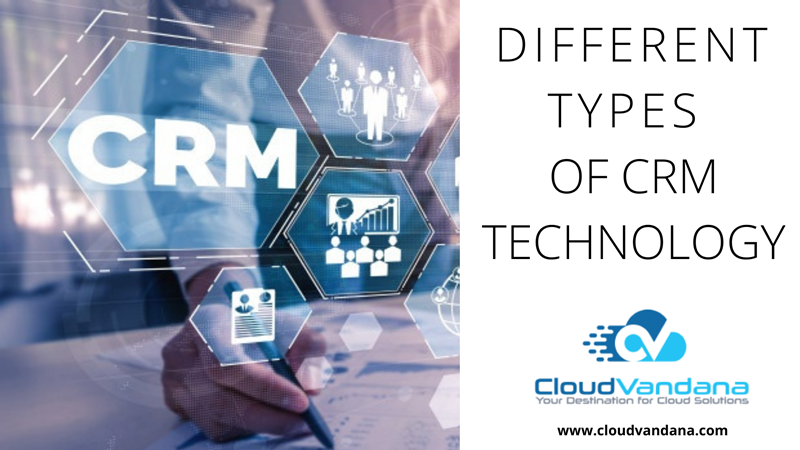
CRM or Customer Relationship Management indicates the technologies, practices, and strategies used by organizations for communicating and managing current and potential customers. It also analyzes customer interactions throughout the customer lifecycle. CRM provides enhanced customer service, improving business relationships, profitability, and driving sales growth. CRM collects and consolidates customer data from various channels. The information is extracted from the company’s website, live chat, direct mail, telephone, social media platforms, marketing materials, and other sources. Customer Relationship Management A properly planned customer relationship strategy can control both the business operations and customers interactions at the same time. Sometimes, it includes CRM software. CRM software helps organizations track and organize their customer database. The main focus of CRM is to maintain healthy long-term relationships with customers. CRM For Businesses CRM software plays an important role to satisfy the customers in different aspects. A successful CRM program helps organizations to improve their business operations. CRM software first understands the customer requirements, then provides a customized solution according to the customer needs to boost the customer relationship. Additionally, CRM Software helps in making a profit and enhance business. CRM also helps the sales team to close deals faster, maintain existing customers, and find new potential quickly. CRM also makes the marketing and sales process easy. CRM software keeps the track of customers’ interests and engagements to provide a personalized service offering. Key Features Of CRM Customer Relationship Management software observes customer data and reports it into a single CRM database. This database helps the users to find the required information and enhance the business process. The information can be accessed anytime according to the requirements. In recent times, few more additions have been added to the CRM systems that make CRM more complete and useful. Companies can interact with potential or existing customers through various channels or platforms, like social media, cold calling, email marketing, etc. CRM stores those data of interaction for any future needs. Besides these functions, CRM provides various automation process that reduces the human error and saves quality time of the sales team so that the team can concentrate in other more productive and important activities. Mainly 4 types of CRM systems are available at the present time, among them, Salesforce is recognized as the world’s #1 CRM platform. The followings are the different types of CRM technologies. On-Premises CRM The on-premises Customer Relationship Management (CRM) controls the key responsibilities like maintenance, security, administration, collection and storage of the information, and the database of the organization. In this case, organizations mainly buy licenses upfront rather than purchasing annual subscriptions from the Cloud CRM provider. Though the integration process is extended, all the required organizational data can be integrated into one platform. Organizations with special CRM needs definitely get benefited from this form of CRM. Cloud-Based CRM Cloud-Based Customer Relationship Management is also recognized as on-demand CRM or SAAS. The collected organizational data is saved on the external remote network. The employees can access and make required changes to the data from anywhere in the world. Sometimes, CRM solutions may involve a third-party service provider for installation and maintenance. Nowadays, maximum organizations are adopting cloud-based CRM for its cost-effective advantage. This also provides a flexible option of monthly or yearly payment, so users can choose the payment method according to their convenience. Open-Source CRM An open-source CRM makes source code available to the public. In this CRM, employing the system does not require any corporate funds. They can simply enable the addition and customization of data links on social media channels, helping the organizations to improve the social CRM practices. Contact Center The sales and marketing collect the leads and preserve them in the system with information throughout the customer lifecycle. The contact center collects those data and proceed with technical support interactions. Social CRM This CRM helps organizations to engage with the potential as well as existing customers in social media platforms, like Facebook, Twitter, Linked In, and many more. These open social platforms offer the opportunity to share the customers’ reviews and ratings with the companies. Positive feedback helps to boost mileage whereas negative feedback helps to rectify the faults. Businesses use various CRM tools to detect customer interactions on social media. The social CRM adds value to the company through customer communities too. This CRM is suitable for small-level businesses. Mobile CRM In present days, mobile devices work as the primary device for internet surfing. Marketing professionals and sales representatives need to access the required information at any time, in any location. Mobile CRM was introduced to access the CRM data through mobile devices, so accessing the CRM data becomes easy, quick, and convenient for sales and marketing representatives. It totally depends on the organization’s resources, goals, operations, and business needs for selecting the right CRM solution and deploying it in their system. If you are looking for an effective CRM solution for your organization, CloudVandana is here to guide you in every step of the process. Take a 15 minutes consultation call for any doubts or queries. Request a Free Consultation YOU MIGHT ALSO LIKE
5 MAIN FEATURES OF PARDOT TO ENHANCE MARKETING ROI

Pardot is recognized as the smarter marketing automation by the world’s #CRM platform Salesforce. Pardot helps the marketer to get an average of a 40% increase in marketing efficiency. Pardot is the best marketing automation software delivered by Salesforce for B2B marketers. Salesforce Pardot features helps the company’s sales and marketing team to boost revenue and efficiency. Salesforce Pardot can help marketers and companies to get more pipelines and marketing ROI. With the help of a personalized campaign in Pardot, the creation, and the movement of the leads through the pipeline become quick and efficient. The features of Pardot include streamlined lead management, smart lead generation, effortless email marketing, seamless sales alignment, social media integration, and insightful ROI reporting. Marketers can generate high-quality leads, improve follow-ups, and simplify the workflow with the help of Pardot. Additionally, Pardot helps the marketers to track the content performance, compare their engagement levels to gain insights that allow them to optimize, distribute, and track the internal engagement. There is a huge range of features and tools to automate and increase marketing efficiency. CloudVandana has given a detailed description of 5 top features of Pardot that are most favored among many other features. 1. Engagement Studio Engagement Studio is one of the most popular Pardot features that allows users to visualize email drip campaigns. Once the drip campaign is activated, marketers can track and monitor the campaign. Pardot Engagement Studio allows the marketers to add/ remove lists, add/remove tags, assign users or groups, change fields, notify the user, and sending automated emails on behalf of the user. Users can use a Salesforce connector to design these actions. Actions can be set according to the requirements like, immediately or when the leads reach a particular step. Engagement Studio keeps the prospects targeted for the chosen amount of time through the part with the help of triggers like email open, email open link, file download, click on content, etc. 2. Connected Campaigns This new Pardot feature was released in Spring’18. With the help of connected campaigns, the Pardot Campaigns, and Salesforce Campaigns are combined for delivering multi-attribution Salesforce Campaigns. This Pardot feature streamlines campaign management and improves campaign reporting. By enabling this feature, users can reduce clutter and save time by working with Engagement History and Pardot Einstein Campaign Insights while users can work with the Pardot prospects without leaving Salesforce. Connected Campaigns allow marketers to work more effectively. 3. B2B Marketing Analytics B2B Marketing Analytics is an Einstein Analytics application that is another popular Pardot feature that can maximize marketing as well as Sales efforts by combining marketing and sales data in a single platform. The B2B marketing analytics tool helps the user to visualize campaign ROI across the various campaigns to prioritize and increase or decrease spending for the campaigns that work best. The multi-touch attribution dashboard helps marketers to gain insights into how the various campaigns influence creating awareness and helps in closing deals fast. So B2B marketing feature allows the marketer to allocate budget to campaigns depending on business goals. 4. Salesforce User Sync Salesforce User Sync feature was introduced by Salesforce for the administrators to manage their Pardot and Salesforce users. This feature is available through the Salesforce Sales Cloud for Pardot users for a better user experience, improved management system, and security. This feature can be enabled through the Salesforce and Pardot connector. When the user empowers the User Sync for Pardot, it becomes a Salesforce platform-powered native lighting apps. The Pardot admin can sync the Salesforce profile with the Pardot profiles to create synced users. In the case of a new user in Pardot, the user profile is matched to the respective Salesforce user profile, but once the changes are enabled, can not be disabled. 5. Dynamic Content Dynamic Content provides different personalized copies to the prospects as per their engagement and requirement. As the contents are personalized and based on engagement, so it provides a seamless experience to the customers and enhances the marketing ROI. Dynamic content helps to increase the conversion rate through landing pages and email list subscribers. Marketers can use this important feature of Pardot strategically to create landing pages based on the pipeline. Though Implementing Pardot and its tools are flexible and easy, still few organizations face some difficulties in proper Implementation according to their business needs. So the process becomes complicated and time-consuming. In CloudVandana, we have a certified team specialized in Pardot and Salesforce who can provide you a seamless implementation or can give consultation that suits best to your Organization. Please take a 15 minutes Free Consultation call and let us know your doubts regarding any Salesforce Customization. Request a Free Consultation YOU MIGHT ALSO LIKE
SALESFORCE PERSON ACCOUNTS OVERVIEW
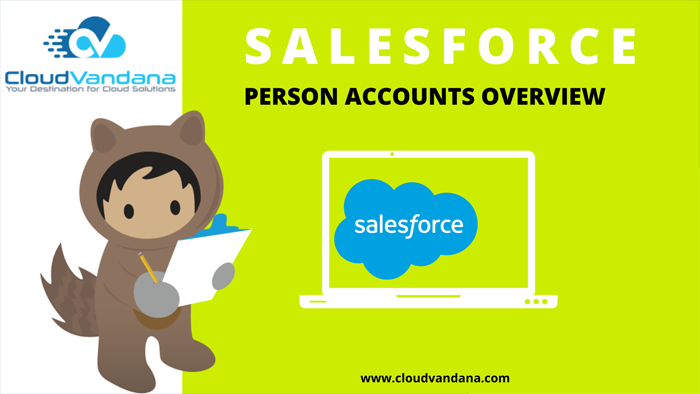
Salesforce Person Accounts stores information about individual people by combining certain accounts and contact fields into one record. Salesforce, the world’s #1 CRM, always provides innovative solutions to customers every time according to their needs. Person Accounts is one of the innovative solutions that Salesforce has specifically designed for the B2C segment to help them better manage their organization. Salesforce account refers to both Person Accounts and Business Accounts. Table of Contents Salesforce Person Accounts And Business Accounts In Salesforce YOU MIGHT ALSO LIKE Salesforce Person Accounts And Business Accounts In Salesforce The default account is Salesforce is invariably Business Accounts. B2B businesses mostly avail themselves of the benefits of business accounts as they mostly have company accounts with contacts. B2C businesses, on the other hand, have individual clients, and they keep their information as an organization or company, which is not a proper CRM solution for this segment. As a result, Salesforce, which has always successfully delivered suitable and customized products to its customers according to their requirements, offers an option of personal accounts to B2C businesses, like financial services, online shoppers, or vacation travelers. The exciting part of Salesforce Person Account is that even B2B businesses dealing with companies and individuals can also switch to Person Accounts. For example, a textile manufacturing company deals with reputed stores and retailers. The accounts of that manufacturing company and the stores are considered Business Accounts, and the accounts associated with the retailers are considered personal accounts. When a company does business with organizations and individuals, a Personal Account could be a better option. The important point is that once the Person Account is enabled, Person Accounts becomes permanent, and the account can’t be converted into Business Accounts anymore. Salesforce users cannot see Person Accounts in the Salesforce set-up menu until Salesforce Support has enabled the Account. The Salesforce Support team will ask users several times before enabling the Salesforce Person Account because it can’t be reversed once created. So, consulting with Salesforce Consulting Companies before proceeding with Salesforce Accounts is advisable. Users should review the Person Account Behaviour guidelines to understand the difference between a personal Account and a Business account. This guide will help them make an informed decision. Personal accounts are available in Professional, Enterprise, Performance, Unlimited, and Developer editions. They are also available in Salesforce Classic and Lightning Experience. Visit CloudVandana to understand Salesforce Accounts better. CloudVandana’s expert team of Salesforce consulting and implementation can help you meet specific business requirements. Schedule A Call Request a Free Consultation YOU MIGHT ALSO LIKE
Maximize Your Sales Potential with Salesforce Revenue Cloud
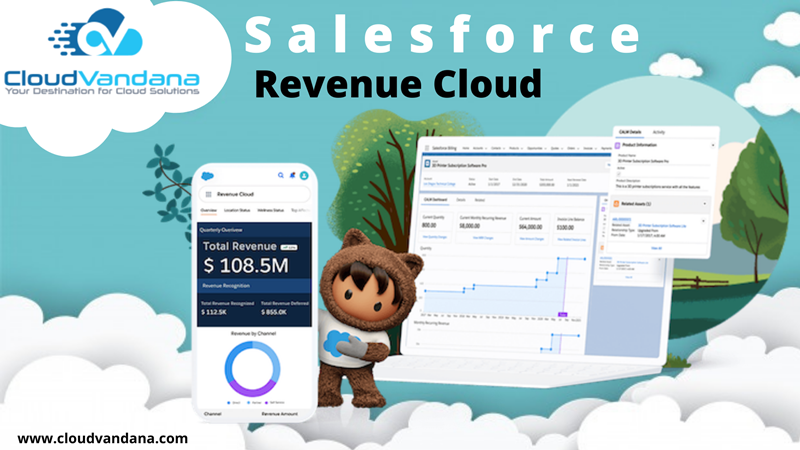
Salesforce Revenue Cloud is a Salesforce product. Salesforce launched its Revenue Cloud in November 2020. Salesforce CPQ is a foundational product that is a part of offerings. In this blog, CloudVandana provides a brief description of Salesforce Revenue Cloud. Salesforce Revenue Cloud puts together the functionalities of CPQ, Billing, PRM, and B2B Commerce, focusing on customers to take control of their revenue growth across all channels. Salesforce Revenue Cloud incorporates Sales channels to provide a seamless experience. For example, a customer can take specific configurations or services and then reach out to a sales representative for a discount. If the representative has a complete understanding of the customer’s product details, then the representative can easily help the customers at their fingertips for a smooth transaction. Salesforce Revenue Cloud is a CPQ-B2B Commerce connector that allows businesses to customize their complex B2B selling, and add configurable pricing to digital carts for a self-service experience. Many businesses need to keep their cash flow positive, so revenue leakage, high operational costs, and inconsistent data solutions must be there in a scalable and transparent way. Salesforce Revenue Cloud is a solution that gives access to companies to connect sales, partners, operations, legal, and finance teams around a single source of truth for revenue and customer transactions, from purchase to revenue reconciliation. This provides a smooth and optimized solution for both data and people, reducing manual steps. Why Revenue Cloud Is needed For any business, prospects and customers are the main important area to focus on. So following are the three main factors that indicate that organizations need to implement Salesforce Revenue Cloud. Inconsistent Data If Salesforce Revenue Cloud is not implemented in any organization, it is very common that their sales data is inconsistent or requires manual intervention to the customer support process. An insufficient data or the wrong configuration makes it difficult for the Sales Representatives to quote properly. So the Sales representative needs to spend more time with that quote for rectification. So Salesforce Revenue Cloud should come as a savior for giving the partners and customers a seamless experience from the initial interaction to the final invoicing. Difficulties With Proper Quoting And Billing Capabilities Native Sales Cloud quoting capabilities are not scaling to meet the growing needs of customers. With segmented invoice and quoting systems, there is a high chance of errors. Salesforce Revenue Cloud combines several solutions into one solution, so quoting and billing can be made into a single integrated platform. Lack Of Systematic Rule Without any systematic rules, companies can not guide the business process properly. By making systematic rules, companies can ensure precious resources are consumed in a better way with customers receiving a quote, order, and invoice that can be easily drafted from start to finish. If any of the upper mentioned symptoms are creating inconvenience, then it might be the proper time to implement Salesforce Revenue Cloud into the organization. Revenue Cloud can easily solve these challenges for a stronger, healthier future. Business Enhancement With Salesforce All of the above-mentioned points indicate a broken user experience that needs to be modified. Salesforce Revenue Cloud’s components are particularly designed to solve these difficulties and additionally, the platform follows Salesforce’s three releases a year program to add additional functionalities. Through the interface of Salesforce Revenue Cloud, end-users and partners can use either Salesforce Sales Cloud or PRM to access the CPQ interface to deliver quotes. As everyone shares the same toolset to create quotes, consistency can be maintained. Additionally, partners can gather information about products and services through the PRM. Besides quoting, it also helps in the promotional material, training guides, and shared client data. In a similar way, Salesforce Billing provides access to necessary documents on a common interface with the whole process of quote-to-cash living on a single platform. Salesforce Revenue Cloud increases revenue growth by optimizing revenue efficiency by introducing scalable processes that are consistent and functional. So, to improve any organization’s functionality to create a seamless customer experience, Revenue Cloud is very essential for any organization. Picture Courtesy: Salesforce Request a Free Consultation YOU MIGHT ALSO LIKE
How Salesforce Loyalty Management Can Boost Your Business
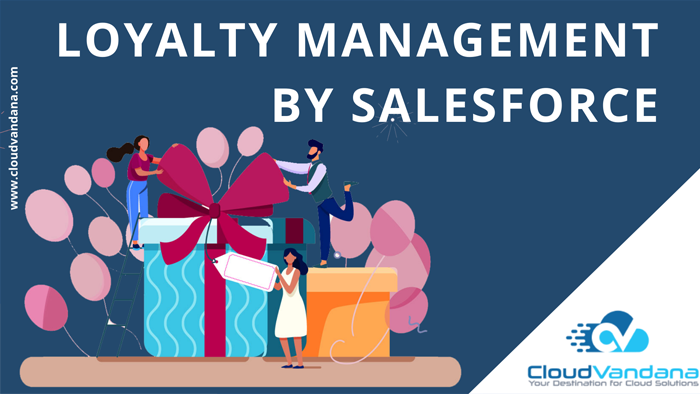
Salesforce Loyalty Management is a standalone product that can be integrated into any ecosystem. Loyalty Management helps to create personalized and intelligent engagements for customers powering positive ROI and increasing customer lifetime value. In this blog, CloudVandana will describe The Loyalty programs in general and the capabilities of Loyalty Management. Customers in both B2C and B2B have quickly adopted the new digital scenario where expectations are higher, and switching vendors are just a click away. Importance Of Customer Loyalty Programme Loyalty programs are a very important tool to support customers and encourage them to stay connected with organizations and businesses. Rewarding customers in a personalized way will encourage them to have a long-term future relationship with the businesses. Successful loyalty programs in place will make the members take in additional purchases to get even more rewards. This will draw more customers or traffic to the businesses as the loyalty program will work as an earned media that drives referral traffic through word of mouth. According to Salesforce, 63% high performing marketers are using loyalty programs. Though construct and managing a loyalty program can be challenging for a few companies as most companies are still using old and outdated methods that fail to deliver the expected results. In addition, these technologies are not compatible with the latest industry trends. To solve these problems and drive more potential customer loyalty experiences, Salesforce recently introduced Loyalty Management, a new product with lots of features that allows the business to create effective and seamless loyalty programs while powering a positive ROI. Loyalty Management Through Salesforce Salesforce Loyalty Management was built on the Salesforce Customer 360 Platform, which allows businesses to create a customized intelligent loyalty program enabling flexibility and quick deployment to fit the specific requirements of both B2C and B2B customers across industries. Following are the capabilities of Loyalty Management. 1. End To End Platform Loyalty management gives the user a customized end-to-end loyalty program to meet all business needs. This interface easily sets up programs, benefits, and currencies. According to the changes the business needs, the platform provides updated loyalty management. 2. Personalized Loyalty Offerings Loyalty Management allows users to store all customer data in one place, including purchase history, interactions, and website visits, to provide a unified view of the customers. This will help the users to deliver personalized offerings to the customers to make them feel special. 3. Loyalty Generation With A Single Source Of Truth Getting the unified customer data is possible only because Loyalty Management is integrated with Salesforce Digital 360, Service Cloud, and Tableau. Users can additionally integrate external systems, like a Customer Data Platform, with integration-ready APIs to connect Loyalty Management to the tech stack. This enables a holistic view of the customer data and a single source of truth where the loyalty experience can be connected to the entire organization. 4. Measure The ROI Of Your Loyalty Program Through the Tableau CRM for Loyalty Management, a user can measure the performance of the program, and promotions, and track engagement, and member acquisition within a single dashboard. Loyalty Management allows the business to adjust programs and paths based on real-time data. Our experts at CloudVandana will be happy to help you to get started with any Salesforce Solutions. Feel free to write in the comment box or take a free consultation call. Request a Free Consultation YOU MIGHT ALSO LIKE
TIPS FOR SALESFORCE CONNECTED CAMPAIGNS
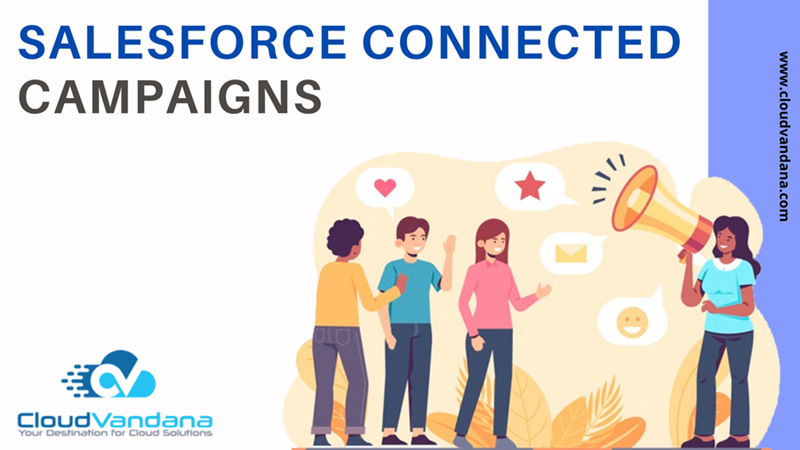
Salesforce Connected Campaigns were introduced in Salesforce’s Summer’18 release. They are very useful to any Pardot Marketer. Connected Campaigns help marketers to connect Pardot Campaign and Salesforce Campaign. In this article, CloudVandana will share few tips to make the connected campaigns as seamless as possible. Difference Between Pardot Campaign And Salesforce Campaign Pardot campaigns record a prospect’s very first touchpoint with the organization. For example, they can click an advertisement to visit the website, can click the website link from an organic search, or can redirect to the website from another source. This is traditionally the Pardot users use the platform for campaigning. On the other hand, Salesforce Campaigns allow multi-touch engagement. Through Salesforce, users can track the leads and contacts to multiple touchpoints. Salesforce campaigns are created for ROI reporting, give access to the users to track marketing efforts at all stages of the campaigning cycle. Users can build the structure according to the marketing initiative. So, if a user wants to have these features in Pardot, Connected Campaigns comes as the savior. Benefits Of Connected Campaigns Salesforce Connected Campaigns allow the users to connect Salesforce and Pardot Campaigns so that prospects can be associated with several campaigns. Once the two platforms are connected, the Pardot Campaign will be having a blue cloud icon that links to the Salesforce counterpart. When connected campaigns are enabled, users can have a new feature called Engagement History. With the help of this feature, users can import Pardot asset data into Salesforce Campaign. Importing this data into Salesforce open up many chances which were not available in the Pardot previously. Additionally, in this Campaign, B2B Marketing Analytics makes multi-touch attribution reporting easier, with remarkable reporting models. Sales Teams’ Benefits The Salesforce connected campaign is very much beneficial to the Sales team. Generally, it is tough to differentiate the forms filled out by the prospects and figure out the interesting areas for each prospect. But through the engagement history functions, the Sales Team can easily figure out the forms filled out by the prospect and their area of interest. One Platform For Sales And Marketing Pardot is delivering one platform campaign through the connected campaign, so it is very much beneficial for both the sales and marketing teams. Following are few tips for successful Connected Campaigns. 1. Reset Before Connecting Before connecting the campaign, the campaign platform needs to be refreshed to establish the campaign hierarchy. After connecting the campaigns, changes might cause difficulties. So it is advisable to reset the platform before connecting. 2. Training Building a training and testing campaign before connecting is very much important as through this method there will be no chance of false revenue or activity to the reporting. 3. Contact Roles Establishing a solid practice of using Contact Roles within the Sales Cloud is very important. Contact roles are essential to automate campaigns with opportunities but then are often neglected. 4. Reporting End Result Planning out reports and dashboards is very important as the user may find many new ideas and can dig a little deeper into the campaign. Summary Salesforce Connected campaign is a great initiative towards giving the users the full information they need to know accurately to calculate the ROI and allocated marketing spend. When it is set up properly, it is a very strong marketing feature to accurately attribute revenue to marketing activities. For a successfully connected campaign integration, please feel free to take a consultation call from the experts of CloudVandana. Request a Free Consultation YOU MIGHT ALSO LIKE
How to Streamline Your Sales Process with Salesforce DocuSign Integration
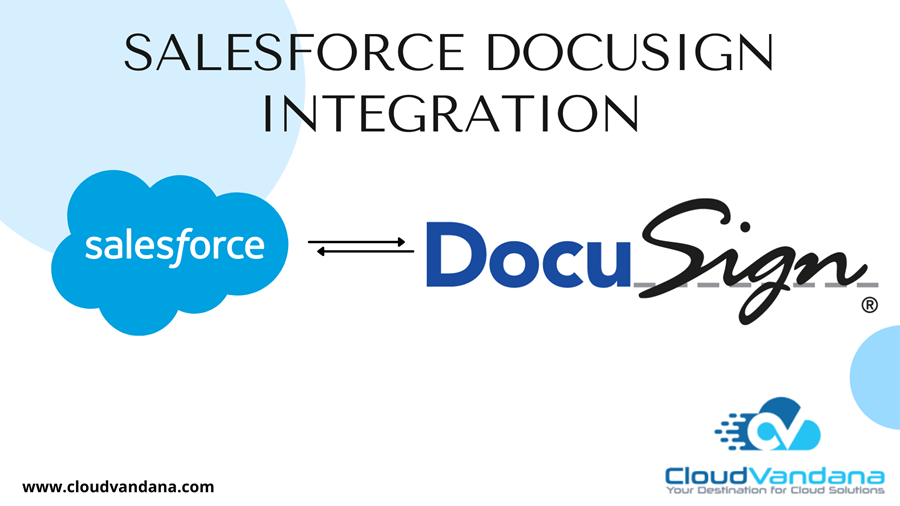
Salesforce DocuSign integration helps companies to digitize their customer experience, shorten the sales cycles, accelerate close rates, enhance productivity, reduce paper waste, and saves time. It gives access to the users to quickly pull data from Salesforce objects like leads, accounts, contact, opportunity, etc. DocuSign provides an online document signing process or sends them out for signature directly from Salesforce. After the signing process, the documents get returned to Salesforce and get attached to the connected Salesforce records. Salesforce is recognized as the world’s #1 cloud-based CRM software that companies across the world are using. One of the most important features of Salesforce is that it allows the organizations to automate congrats through its integration with DocuSign. Integration Benefits DocuSign is recognized as the widely-used e-signature solution. It allows the companies to digitize the legal and official contracts by providing electronic signatures on them. DocuSign is easy to operate, secured, and reliable and as it is integrated with Salesforce, it allows companies to provide a fully digital customer relationship management to their customers. This automated customer agreement process is developed by top UX design farms, so comes with many benefits. Following are the benefits- 1. Speed Up Turnaround Times With the help of Salesforce DocuSign integration, users can easily reduce the turnaround time for customer agreement. This automation increases the productivity of the employees. 2. Cost Reduction With the help of Salesforce and Docusign, organizations can easily limit financial expenses easily, as everything is digitized and available on the cloud. This integration gives the users an opportunity to invest the budget in other areas with greater ROI. 3. Better Accuracy And Efficiency As the integration provides fully automated processes, there is no chance for manual error. So the employees can work more efficiently. Transactions are also safe and secured so there is no chance of losing or breaking important data. 4. Seamless Customer Experience Salesforce DocuSign integration provides a secure, accurate, and efficient service to the customers. So customers can experience a seamless customer journey. They neither need to worry about the security nor the long time wait for the agreements. 5. Decreased Paper Wastage Salesforce Docisign integration helps in reducing paper wastage remarkably. With the increasing concern over saving the environment, cutting down the use of paper and going digital enables the users to contribute a little towards an eco-friendly business process. Working Process Of DocuSign with Salesforce Now, we know the basic advantages of Salesforce DocuSign integration. Now CloudVandana will discuss in detail the working process of DocuSign with Salesforce. The best part of this integration is that it does not require any coding and can be integrated following some simple steps. Though the process is easy still for a better installation process, organizations are advised to hire professionals or consultants to help in the integration process. CloudVandana has a large group of various consultants for all the business needs so that the organizations can focus on their own core businesses. This is a suggestion for making the whole process quicker, smoother and precise. Professionals can guide with few hidden useful features. The integration process is followed by configuration. Here is an overview of the process. This integration can even automate the overall sales process. This is a process from quoting to cashing. This provides a sales tool that can help the users to generate quick quotes for orders. This is also known as the Quote-to-Cash process where the end-to-end business transactions are automated. This process includes everything from identifying costumes’ needs, sending an agreement, signing the contracts, or receiving funds or cash. Following are the process overview- Conclusion Salesforce DocuSign integration is very useful for most organizations. Though some of them find the integration a bit difficult or technical. So it is advisable to connect with the experts for a seamless process and enhanced business growth. Request a Free Consultation YOU MIGHT ALSO LIKE






